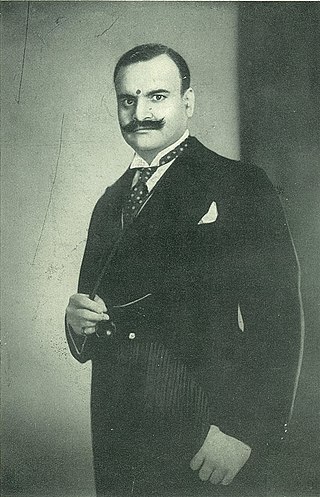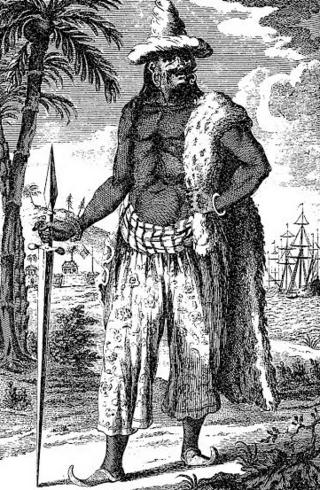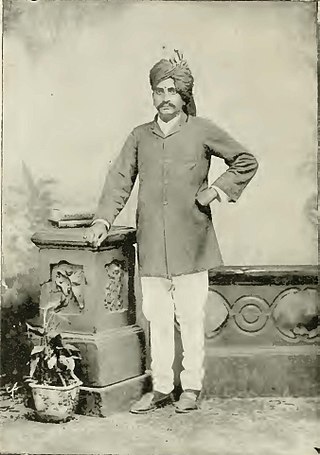
The Maratha Empire also referred to as the Maratha Confederacy was an early modern Indian empire and later a confederation that controlled large portions of the Indian Subcontinent in the 18th century. Maratha rule formally began in 1674 with the coronation of Shivaji of the Bhonsle dynasty as the Chhatrapati. Although Shivaji came from the Maratha caste, the Maratha empire also included warriors, administrators, and other nobles from the Maratha and several other castes from what is known today as Maharashtra. The Maratha Kingdom was expanded into a full-fledged Empire in the 18th Century under the leadership of Peshwa Bajirao I.

Alibag, also known as Alibaug, is a coastal city and a municipal council in Raigad district of Maharashtra, India. It is the headquarters of the Raigad district and is south of the city of Mumbai. Alibag is part of the Mumbai Metropolitan Region and is situated at a distance of about 96 km from Mumbai and 143 km from Pune. Alibag is a holy place for Goddess Shree Padmakshi Renuka. She is also known as goddess of Konkan.

Kanhoji Angre, also known as Conajee Angria or Sarkhel Angré was a chief of the Maratha Navy in present-day India. Kanhoji became known for attacking and capturing European merchant ships and collecting jakat, seen by Europeans traders and colonists as ransoming of their crews. British, Dutch and Portuguese ships often fell victims to these raids.Despite attempts by the Portuguese and British to put an end to his privateering activities, Angre continued to capture and collect jakat from European merchant ships until his death in 1729. Kanhojikoli 's naval prowess in capturing dozens of European trading ships and avoiding capture has led to many historians to appraise Kanhoji as the most skilled Indian navy chief in the maritime history of India.

Shahu I was the fifth Chhatrapati of the Maratha Empire founded by his grandfather, Shivaji I. He was born into the Bhonsle family, and was the son of Sambhaji I and Yesubai. At a young age, he was taken into custody at the Siege of Raigad by Mughal emperor Aurangzeb, and held captive by the Mughals. He was released from captivity after the death of Aurangzeb in the hope of engineering an internecine struggle among the Maratha factions of Tarabai and Shahu. Raja Shahu emerged victorious in the bloody Battle of Khed and was crowned as Chhatrapati.

Balaji Vishwanath Bhat (1662–1720) was the first of a series of hereditary Peshwas hailing from the Bhat family who gained effective control of the Maratha Empire and the Mughal vassals of the Marathas during the early 18th century. Balaji Vishwanath assisted a young Maratha king Shahu to consolidate his grip on a kingdom that had been racked by civil war and persistently intruded on by the Mughals under Aurangzeb. He was called the Second Founder of the Maratha State. He secured a grant from the Mughal court that confirmed Shahu as the legitimate Mughal vassal, at the expense of his rival Sambhaji. Later, his son Bajirao I became the Peshwa.

Suvarnadurg is a fort that is located between Mumbai and Goa on a small island in the Arabian Sea, near Harnai in Konkan, along the West Coast of India, in the Indian state of Maharashtra.

Kolaba Fort located at Alibag beach is an old fortified maritime base in Alibag, Konkan, India. It is situated in the sea at a distance of 1–2 km from the shores of Alibag, 35 km south of Mumbai, in the Konkan region of Maharashtra, India. It is a popular tourist destination and a protected monument.

Khanderi is an island with a fort, located south of Mumbai, along the coast of Maharashtra, India.

Vijaydurg, the oldest fort on the Sindhudurg coast, was constructed during the regime of Raja Bhoja II of the Shilahar dynasty and restructured by Chhatrapati Shivaji Maharaj.
Ramji Mahadev Biwalkar was a Maratha General during the Peshwa Period. He is renowned as the builder of the Varadvinayak temple in Mahad.
Gowalkot is a small fort located on the southern bank of Vashishti River, about 10.0 km (6.2 mi) from Chiplun in Maharashtra, India. This fort is guarded by the river on three sides and a trench on the fourth side. Its population which includes Hindus, Muslims, and Buddhists. According to old natives of Gowalkot, the history of Gowalkot goes back to a King, who was Hindu and finally was converted in Muslim, his surname was "Chougle", and most of the land in Gowalkot is owned by the Chougle family. All other owner of land in Gowalkot must have either received the land as gift [or bought] from Chougle family must have lost in "kul kaida" a rule by the government.

The Battle of Vijaydurg was fought between Tulaji Angre, the Admiral of the Maratha Navy and the combined forces of the East India Company and the Maratha Confederacy led by Peshwa Balaji Bajirao in early 1756.

The Maratha Navy was the naval wing of the armed forces of the Maratha Empire, which existed from around the mid-17th century to the mid-18th century in the Indian subcontinent.

Sardar Chandroji Sambhaji Rao Angre was an Indian politician. He was a Member of Parliament, representing Madhya Bharat in the Rajya Sabha the upper house of India's Parliament as a member of the Hindu Mahasabha. He was a seventh-generation descendant of the famous Maratha admiral, Kanhoji Angre. He distinguished himself as the champion of Hinduism and was popularly called "Dharmvir". He was the Foreign and Political minister of Gwalior and was also vice-chairman of the Executive council of the Gwalior Kingdom, for the minority of raja Jivajirao Scindia. He succeeded his father Sambhajirao Angre as head of the Angre family in 1917.
Jawji Babaji Gawli was also referred to as Jauji Gauli or Javji Gauli or Jivaji Gauli was a Sardar (Chieftain) in the Peshwa's army during the reign of Balaji Baji Rao.

Tulaji Angre, called Tulajee Angria by English historians was the grand admiral of the Maratha Navy and ruler of Colaba State in modern-day India. Similar to his famous father Kanhoji Angre, he too was an extremely skilled admiral and attacked several European trading ships. His achievements and naval prowess are considered to be greater than that of his father by some scholars and chroniclers. On various occasions he fought against the English, Dutch, Siddis And Portuguese maritime Powers. However, he alienated himself from the Maratha Peshwa, Balaji Baji Rao which led to his capture by the East India Company and Peshwa's forces at the Battle of Vijaydurg in 1756.

The Dhulap family was a Maratha noble family of the Maratha Empire in the late 18th century-early 19th century who were hereditary sarkhels or supreme commanders of the Maratha Navy during its decline. They came to power after the Angre family's downfall and Tulaji Angre's defeat at the Battle of Vijaydurg by the East India Company. Rudraji Dhulap and his son Anandrao Dhulap successively served as grand admirals of the Maratha Navy.
Yesaji Angre was a military commander and the youngest son of Kanhoji Angre, the famed Maratha Navy admiral from his wife Gahinabai Bhonsle. He spent his naval career under the service of his elder half-brother Sambhaji Angre. The Gwalior branch of the Angre family was descended from him.

Sardar Sambhajirao Angre I was the prime minister of the Gwalior Kingdom during the rule of Jankoji Rao Scindia II and Jayajirao Scindia. He was the great-grandson of the famous Maratha Navy admiral Kanhoji Angre and grandson of Yesaji Angre.

















